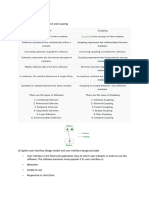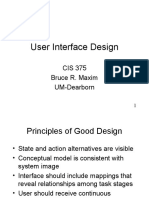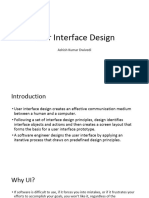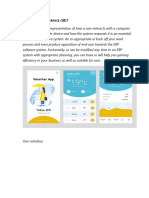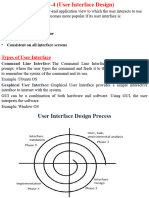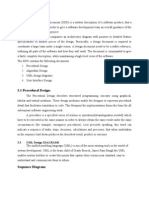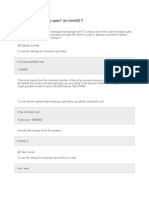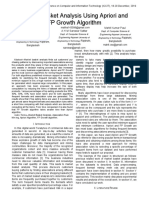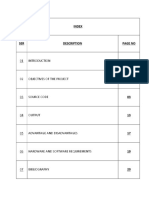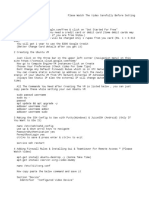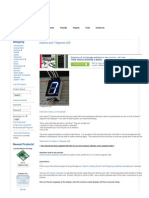0% found this document useful (0 votes)
11 views4 pagesUnit II Lecture 8 User Interface Design
User Interface Design is essential for effective communication between humans and computers, focusing on the design of interfaces among software components, external entities, and users. Key principles include placing users in control, reducing memory load, and maintaining consistency across interfaces. The design process is iterative, involving user analysis, interface design, construction, and validation to ensure usability and user acceptance.
Uploaded by
vishalyadaviitian1Copyright
© © All Rights Reserved
We take content rights seriously. If you suspect this is your content, claim it here.
Available Formats
Download as PDF, TXT or read online on Scribd
0% found this document useful (0 votes)
11 views4 pagesUnit II Lecture 8 User Interface Design
User Interface Design is essential for effective communication between humans and computers, focusing on the design of interfaces among software components, external entities, and users. Key principles include placing users in control, reducing memory load, and maintaining consistency across interfaces. The design process is iterative, involving user analysis, interface design, construction, and validation to ensure usability and user acceptance.
Uploaded by
vishalyadaviitian1Copyright
© © All Rights Reserved
We take content rights seriously. If you suspect this is your content, claim it here.
Available Formats
Download as PDF, TXT or read online on Scribd
/ 4

